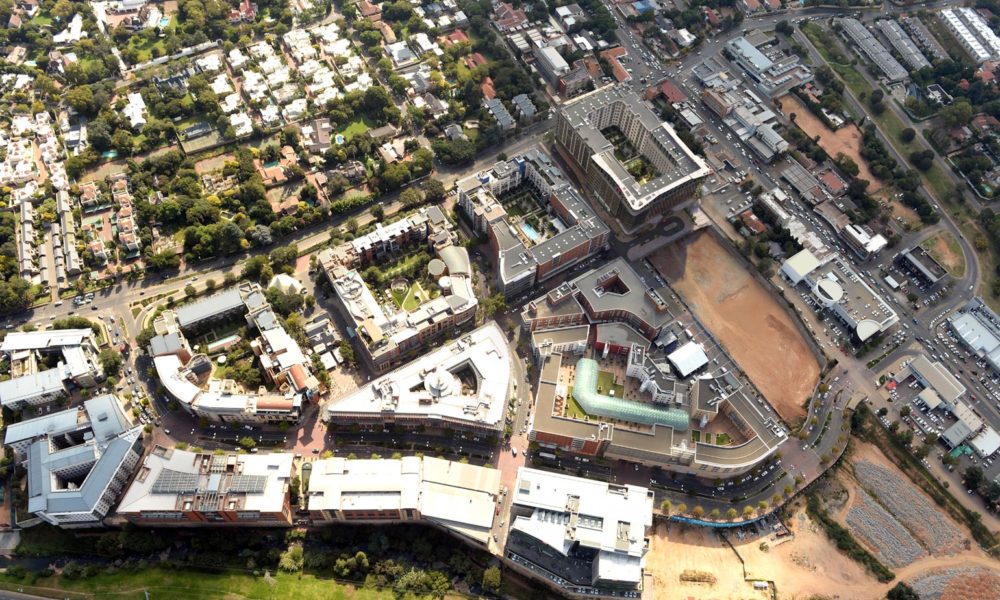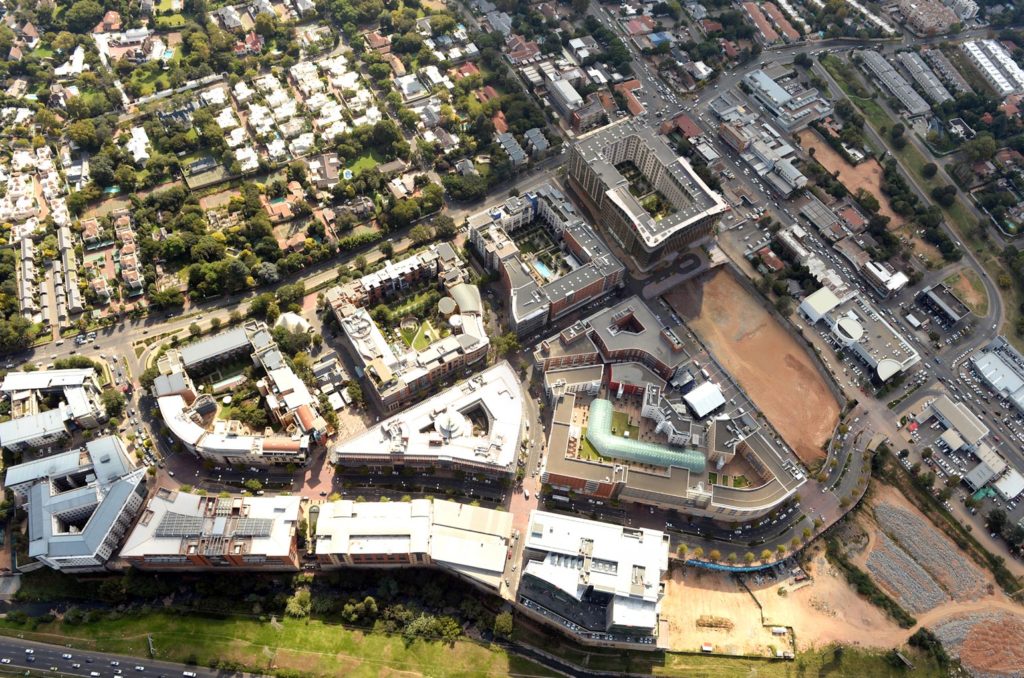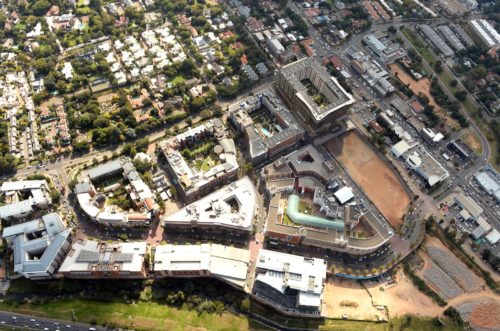A lot of what fosters walkability is out of their control, but a little audacity goes a long way when it comes to city planning.
Among the many pieces of wisdom in Jane Jacobs’ 1961 masterpiece, The Death and Life of Great American Cities, one stands out a half-century later as a near-universal urban planning truth. It’s the idea that healthy communities are built on the face-to-face contact of their residents. Routine daily meetings of neighbors on the sidewalk foster public safety and social cohesion. “Lowly, unpurposeful and random as they may appear,” Jacobs wrote, “sidewalk contacts are the small change from which a city’s wealth of public life may grow.” Melrose Arch, and especially One On Whiteley, were born from that idea of walkability and interconnection.
Weak Ties
Twenty years after the publication of Jacobs’ book, the sociologist Mark Granovetter added some academic rigor to her anecdotal evidence. Granovetter studied a wide range of urban neighborhoods and found that the most successful ones were built on what he called “weak ties,” informal contacts among casual acquaintances who stop on the street to share news, gossip or simple good wishes. A robust array of weak ties gives city dwellers access to jobs, child care and practical advice, and it enhances their overall sense of well-being.
Sidewalk contacts require, at a minimum, the presence of sidewalks. But more than that, they require sidewalks to be places where people feel comfortable spending time — gathering spots, not just thoroughfares. The best ones are visually attractive, inhabited by storefront commerce that’s fun to look at, and blessed with a diverse array of people to watch. Starting with these fundamentals, the concept of walkability has evolved.
Walkability
It’s rare these days to find a city planning office that doesn’t include a commitment to walkability in its promotional literature. For the past decade, cities and neighbourhoods have been able to access websites that tell them (and potential home-buyers) just how walkable they are in comparison to competing places nearby.
Still, walkability remains a bit of a slippery concept. Some neighborhoods seem to have most of the right physical attributes and yet lack any real vibrancy. Others don’t look like much and still manage to draw on an ample supply of local residents polishing their weak ties at all hours of the day and evening. Walkability brings to mind Justice Potter Stewart’s famous definition of pornography, “I know it when I see it.” But coming up with a precise definition of walkability is harder than you might expect. And on a more practical level, it raises a key question: How much can local governments and neighborhood activists do to create walkability through deliberate decisions?
Melrose Arch and Walkability
Melrose Arch’s new urban design creates a rare quality of in and out-doors residential, commercial, retail and leisure spaces. Bustling with boutique browsers and café culture, Melrose Arch offers a truly international high street fashion experience, al fresco style, leading to the sparkling retail galleria that provides the stage on which over 100 of the country’s top retailers re-define the face and future of shopping.



